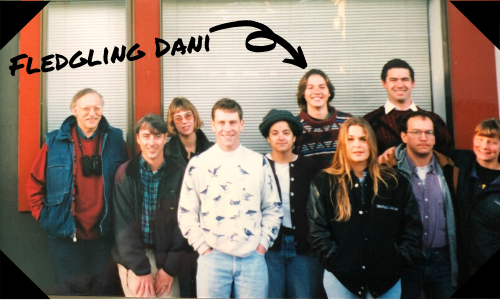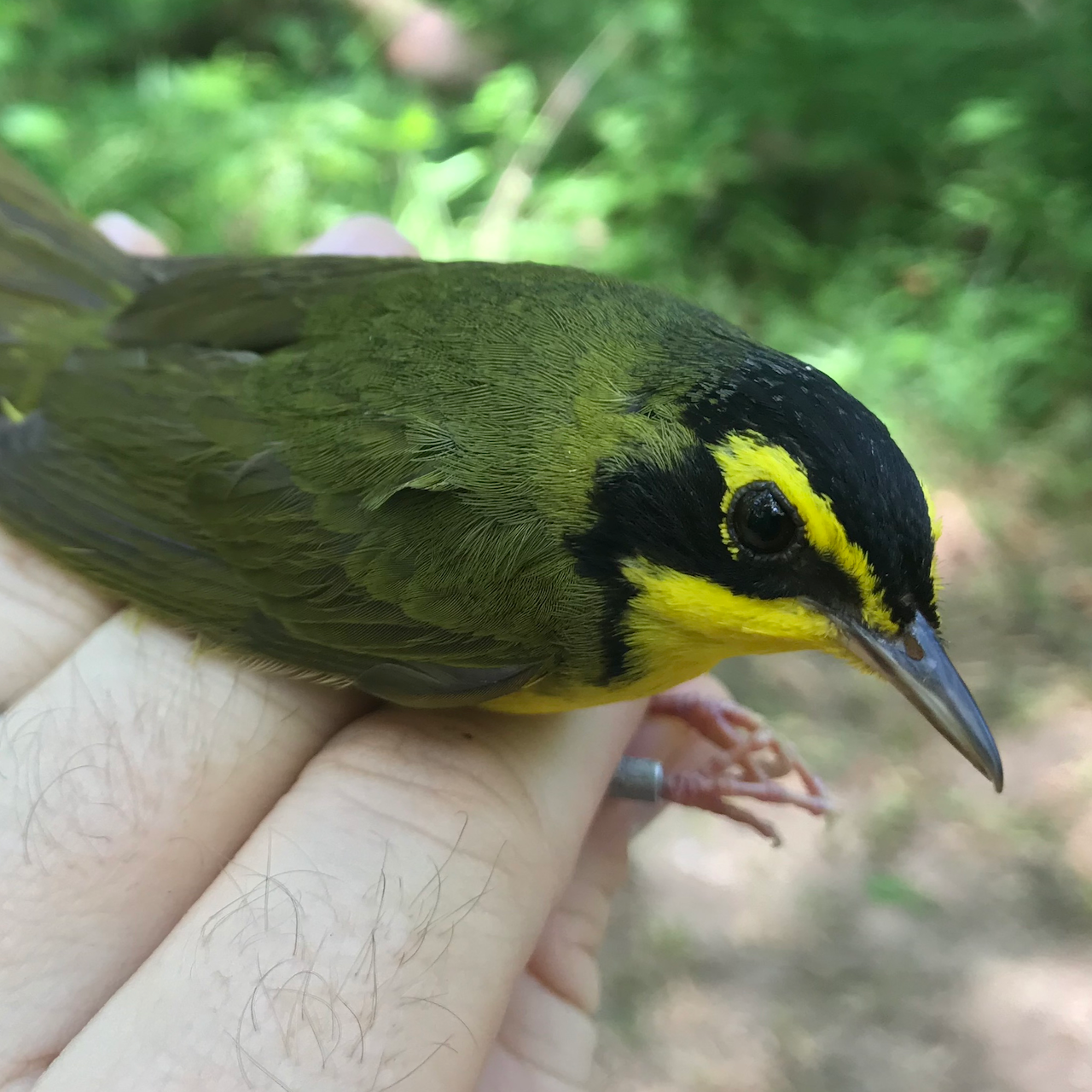Danielle Kaschube first joined IBP when she was just a fledgling fresh out of the University of Calgary. She took a job as a summer intern in 1995, and because Dani is delightful and does damn fine work, IBP convinced her to stick around. Today she's not only our MAPS coordinator, she also coordinates our bird banding courses–teaching across the US and Canada, and she does some data analysis.
What was your first bird job?
I watched Loggerhead Shrikes to determine which habitats they preferred to forage in. It involved sitting in a lawn chair on a mostly defunct railroad track in a remote location in southern Alberta. Then at the end of the season I dissected a lot of shrike pellets to determine what made up most of their diet. It was a great first bird job because the tasks were simple but it allowed me to learn a lot from the people I was working with.

IBP staff circa 1996. From left to right: Dave DeSante, Zed Ruhlen, Hillary Smith, Ken Burton, Pilar Velez, Danielle Kaschube (née O'Grady,) Jessica Corbitt, Eric Feuss, Dan Rosenberg, and Jennifer Gervais
The best part is sharing the birds with all of the people I get to interact with for the MAPS program and for the bander training program. The worst part is not having enough time to fully help and appreciate the MAPS cooperators.
Do you have a favorite bird?
I have two. My favorite over all are Barn Swallows because I love to watch them fly. They are amazing flyers. I also love Gray Catbirds when it comes to banding. They are so friendly, just the right size for most people’s hands and have molt limits that in SY birds that can be seen but aren’t too obvious. They are a great bird for teaching new banders.
Place you'd most like to band birds but haven't yet:
There are so many places I would love to band. One that comes to mind is the MAPS stations that are operating in Northern Alberta. They catch an amazing diversity of birds and it is a habitat I have never been to.
But no matter where I go, there are amazing birds to see and things to learn. Rather than places to band, there are people I would love to band with and suck up all of their banding knowledge, tips and tricks. I teach a lot of classes but I am a student at every class as well – people always have new things I can learn from them.
Oldest person you've ever taught to band?
I know I’ve taught a few people in their 70s, but more impressive to me are the folks that I know who are banding, sometimes in rather rough terrain, well into their 80s. I am specifically thinking of several women that are my role models for how persistent they are about getting in the field. I want to be like them when I grow up.
What is the most common mistake you see bird banders make?
Panic – especially with new banders. When people have to process a species that is new to them (or have to look in the Pyle guide) they forget everything they already know. Reminding people they already know the answers is one of the most common pieces of advice I give my students.
Oddest question you've ever gotten about bird banding or birds in general:
I guess it was a statement more than a question from my grandmother. She visited a banding demonstration I was doing and we started talking about hummingbirds. She was certain that for their migration they rode on the backs of migrating geese. I don’t think I ever convinced her that the hummingbirds made the trip using their own wings.
Do you have any hobbies?
I have kids, so they are my biggest hobby for now. I am both a Girl Scout and Boy Scout leader so that keeps me active with my kids, but I like to sew, swim, and hike as well.






